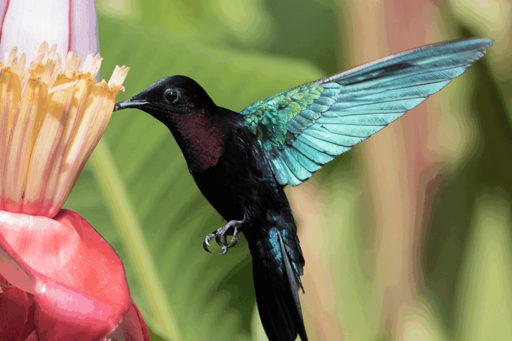In the aftermath of Hurricane Maria’s assault on the Caribbean island of Dominica in 2017, researchers made a heartbreaking discovery: dead and dying hummingbirds scattered across the forest floor. Among them were purple-throated caribs (Eulampis jugularis), the specialized pollinators of the island’s Heliconia plants. This single storm threatened an evolutionary partnership millions of years in the making, killing three-quarters of the hummingbird population and leaving their flowering partners without their primary pollinators. The disaster on Dominica exemplifies a threat that scientists are only beginning to understand: how natural disasters can drive vulnerable species toward extinction. A study identified 2,001 species (834 reptiles, 617 amphibians, 302 birds and 248 mammals) that have at least 25% of their habitat in areas experiencing high impact from hurricanes, earthquakes, volcanic eruptions and tsunamis. Hurricane Maria makes landfall in 2017. Animal populations weakened by human activities are at greater risk from storms and other natural hazards. MODIS/Terra Satellite image posted by Antti Lipponen (CC BY 2.0) “This is the first attempt to provide a global map of species at risk of extinction due to natural hazards,” lead author Fernando Gonçalves, a postdoctoral researcher at the University of Zurich, told Mongabay. The study analyzed approximately 50 years of historical data on these four kinds of natural hazards. Hurricanes pose the greatest threat, affecting 983 of the high-risk species, followed by earthquakes (868 species), tsunamis (272 species) and volcanic eruptions (171 species). The highest concentrations of at-risk species were found along the Pacific Ring of Fire, a…This article was originally published on Mongabay
From Conservation news via this RSS feed


